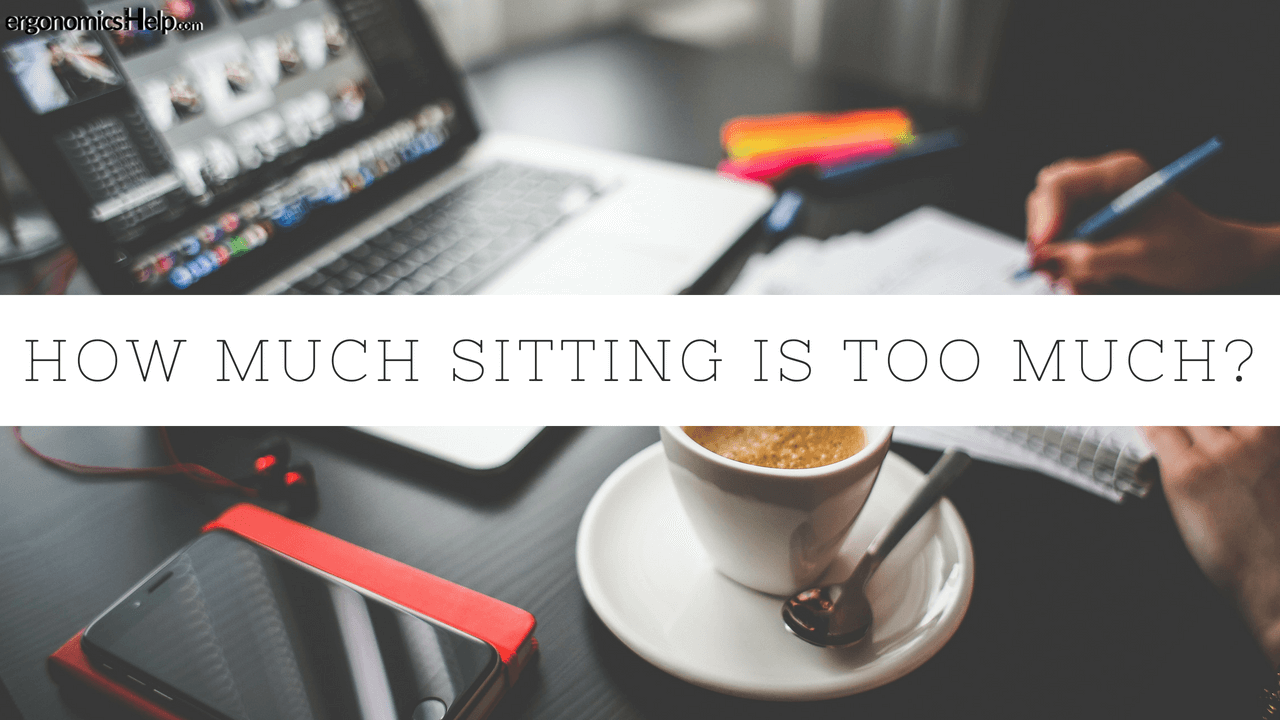How Much Sitting is Too Much?
Jun 25, 2025
Too Much Sitting: What I Tell My Clients (And What You Can Do About It)
As an ergonomics consultant, one of the most common issues I see in modern offices is too much sitting.
It’s not just a buzzword anymord. Prolonged sitting is linked to some very real health concerns. But unlike splashy headlines like “Sitting is the new smoking,” my goal is to give clients a grounded, practical framework to actually do something about it.
Here’s what I share with clients when we talk about reducing sedentary time, and why it matters so much.
What We Know About Sitting Too Much
There’s strong evidence connecting long periods of sitting with:
-
Increased risk of type 2 diabetes
-
Higher chances of certain cancers (like endometrial and ovarian)
-
Greater likelihood of depression
-
And even earlier mortality
This doesn’t just apply to office time either—think long Netflix sessions, commutes, or scrolling on the couch. Sedentary time adds up.
And while there’s no universal guideline for “how much is too much,” it’s clear that breaking up long bouts of sitting with movement makes a difference.
Even Small Changes Add Up
Some of the best research we have right now shows that just standing or moving lightly for a few minutes every 30–60 minutes can help reduce the metabolic impact of sitting. It doesn’t have to be a full workout—even light activity or switching to a standing posture helps.
Here’s what I tell my clients:
-
Start with 2 hours of standing spread throughout your workday.
-
Work your way up to 4 hours, if possible.
-
Use sit-stand desks or reminders to help break up long sitting bouts.
-
Productivity won’t suffer—many clients actually report feeling better and more focused.
That’s the sweet spot we’re aiming for: less discomfort, more energy, and better long-term health.
But Here’s the Catch…
Installing a sit-stand desk alone won’t do the trick. Research shows it needs to be part of a bigger cultural shift: education, permission to move, leadership buy-in, and smarter job design.
These are the conversations I’m having more and more during assessments. It’s not just about adjusting a chair or raising a monitor—it’s about shaping an environment that encourages people to move.
Practical Tips For Ergonomists
If you’re advising a workplace, here are some simple strategies that actually work:
-
Use software prompts or phone timers to nudge movement every 30–60 minutes
-
Centralize printers or waste bins so movement becomes part of the workflow
-
Stand during meetings or phone calls
-
Choose a sit-stand desk—but combine it with education and a clear movement strategy
-
Ask leadership to model active behavior (it really matters!)
-
Rethink dress codes—shoes and clothing affect how people feel about moving more
And my personal favorite? Encourage people to just notice how their bodies feel. That awareness is what sparks long-term change.
In Closing...
This post isn’t just about reducing sitting, it’s about building healthier, more dynamic work environments that support how people actually feel and function.
If you’re an ergonomics consultant like me, and you're ready to help more people feel better at work with solid, research-backed strategies (and save yourself time and second-guessing), I made something for you.
👉 Check out my free training here.
It’s packed with practical tips, assessment strategies, and client-ready insights to help you do your best work... and help more people in the process.
Let’s keep making ergonomics simple, effective, and impactful.
